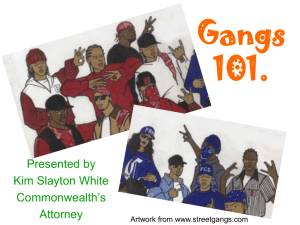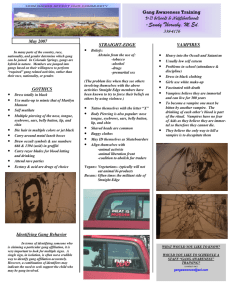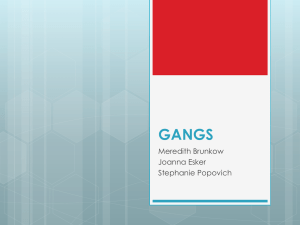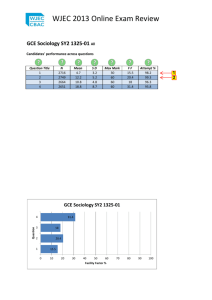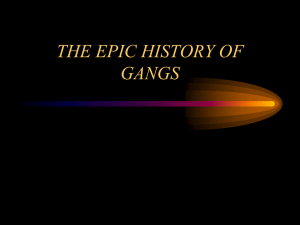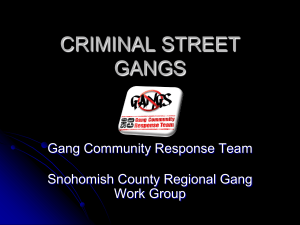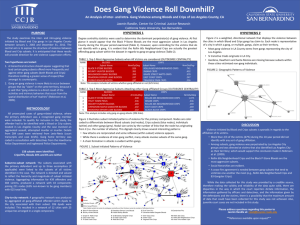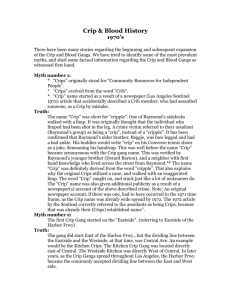Gang Awareness Guide: MS13, Sureños, Crips & More
advertisement
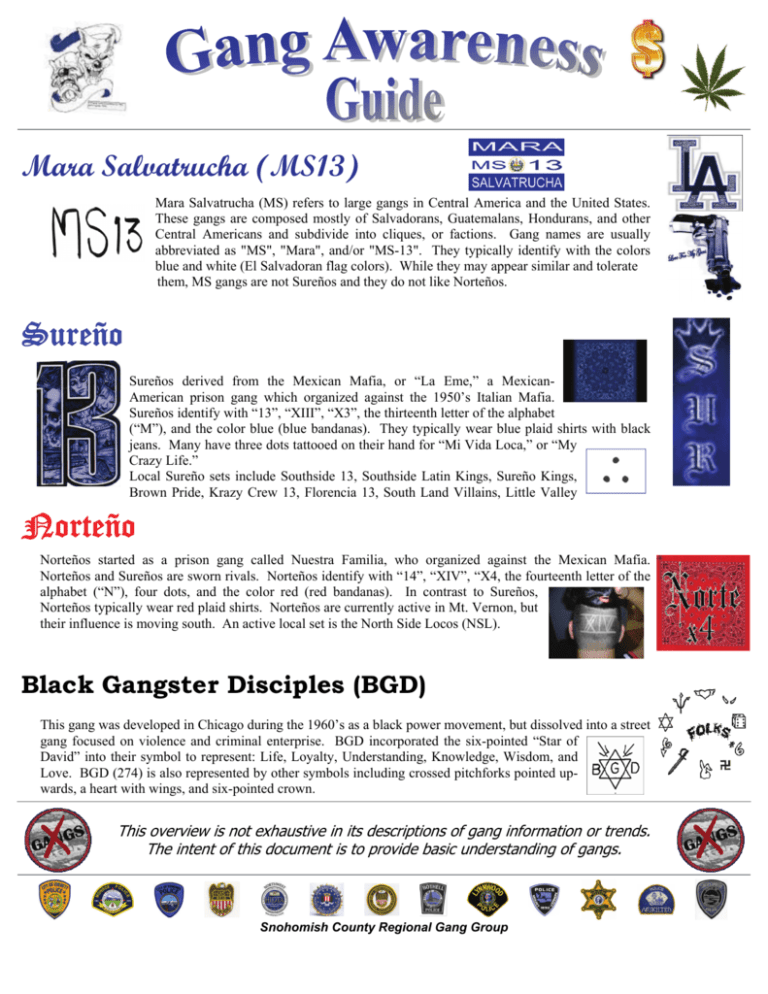
Mara Salvatrucha (MS13) Mara Salvatrucha (MS) refers to large gangs in Central America and the United States. These gangs are composed mostly of Salvadorans, Guatemalans, Hondurans, and other Central Americans and subdivide into cliques, or factions. Gang names are usually abbreviated as "MS", "Mara", and/or "MS-13". They typically identify with the colors blue and white (El Salvadoran flag colors). While they may appear similar and tolerate them, MS gangs are not Sureños and they do not like Norteños. Sureño Sureños derived from the Mexican Mafia, or “La Eme,” a MexicanAmerican prison gang which organized against the 1950’s Italian Mafia. Sureños identify with “13”, “XIII”, “X3”, the thirteenth letter of the alphabet (“M”), and the color blue (blue bandanas). They typically wear blue plaid shirts with black jeans. Many have three dots tattooed on their hand for “Mi Vida Loca,” or “My Crazy Life.” Local Sureño sets include Southside 13, Southside Latin Kings, Sureño Kings, Brown Pride, Krazy Crew 13, Florencia 13, South Land Villains, Little Valley Norteño Norteños started as a prison gang called Nuestra Familia, who organized against the Mexican Mafia. Norteños and Sureños are sworn rivals. Norteños identify with “14”, “XIV”, “X4, the fourteenth letter of the alphabet (“N”), four dots, and the color red (red bandanas). In contrast to Sureños, Norteños typically wear red plaid shirts. Norteños are currently active in Mt. Vernon, but their influence is moving south. An active local set is the North Side Locos (NSL). Black Gangster Disciples (BGD) This gang was developed in Chicago during the 1960’s as a black power movement, but dissolved into a street gang focused on violence and criminal enterprise. BGD incorporated the six-pointed “Star of David” into their symbol to represent: Life, Loyalty, Understanding, Knowledge, Wisdom, and Love. BGD (274) is also represented by other symbols including crossed pitchforks pointed upwards, a heart with wings, and six-pointed crown. This overview is not exhaustive in its descriptions of gang information or trends. The intent of this document is to provide basic understanding of gangs. Snohomish County Regional Gang Group Crips This street gang originally developed in Los Angeles in the 1960s. Crips identify themselves by the color blue and call themselves “Blood Killas”. They wear brands like British Knights (initials BK) and often refer to each other as “Cuzz”. Their writings cross out the letter “B” as a show of disrespect to the Bloods. Local sets include “74 Hoover Crips” and “West Covina Crips”. Bloods The Bloods developed as a reaction to the Crips gaining power in the 1970’s. While the two groups oppose each other, violence escalated with the marketing of crack cocaine. The 1980’s movie Colors helped Bloods become a household name. While Bloods engage in a variety of criminal activity, they are mostly involved with drug sales. As denoted by their name, Bloods identify with the color red (red bandanas) and refer to themselves as “Crip Killas” or CK. Their writings cross out the letter “C”. A common tag is “M.O.B” (Member of Bloods/Money over Bitches). Local sets include “900 Blk Bloods” and “East Side Piru”. Asian Gangs There are several Asian gang sets active within Snohomish County. This includes groups called “Flipside 23 (FS23),” a Philippino Blood set active in North King County and South Snohomish County, “Tres Nissho Boys (TNB),” a gang that originated in Guam and initially moved to Everett as a break dancing group, “Asian Bloods (AB),” an Asian Blood set from the Casino Road area, “Oriental Loco Boys (OLB),” an Asian gang that has local drug connections, and “Tiny Rascal Gangsters (TRG),” rivals of the Oriental Loco Boys. Juggalos Juggalos consider themselves “family” members and are dedicated followers of a band called Insane Clown Posse (Psychopathic Records label). They originated on the East Coast, and some groups have formed a gang-like mindset. The Hatchetman is the record label’s logo but now identifies the gang. Members paint their faces white with black accents and often wear red and black clothing. Female members are known as Juggalettes, and male members are known as Juggalos. Local members have committed robberies and assaults. This overview is not exhaustive in its descriptions of gang information or trends. The intent of this document is to provide basic understanding of gangs. Snohomish County Regional Gang Group

